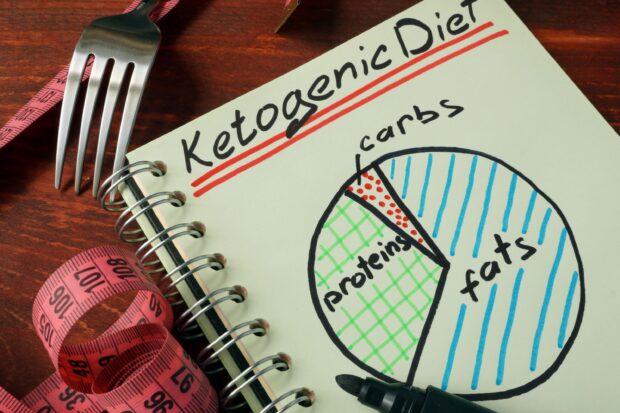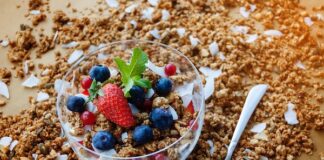As the ketogenic (keto) diet continues to gain popularity for its weight loss and health benefits, it’s essential to be well-informed before diving into this low-carb, high-fat, moderate-protein lifestyle. But what’s the science behind this diet, and is it suitable for everyone?
This blog explores several critical insights to consider before starting a keto diet, including the role of probiotics and the expected results.
1. Keto Diet Fundamentals
The primary focus of the keto diet is to shift your body’s metabolism from burning carbohydrates to burning fat for fuel. This metabolic state, known as ketosis, occurs when you significantly reduce your carbohydrate intake, typically to less than 50 grams per day, while on a moderate-protein, high-fat diet.
By drastically reducing carbs, your liver produces ketones, an alternative energy source for your brain and body. As your body enters a ketosis metabolic state, your stored fat is burned for fuel, promoting weight loss and other potential health benefits like improved insulin sensitivity.
2. Initial Side Effects
During the initial stage of the diet, beginners might experience symptoms like fatigue, headaches, muscle pain, abdominal discomfort, and irritability, commonly known as the ‘keto flu.’ These symptoms usually subside within a month as your body adapts to the new fuel source.
3. Safety And Suitability
However, the keto diet is not suitable for everyone. People with type 1 diabetes, kidney disease, or certain metabolic disorders should avoid the diet due to potential complications like kidney stones and diabetic ketoacidosis, a condition characterized by insulin deficiency leading to acid buildup in the blood.
Additionally, pregnant and breastfeeding women should consult their healthcare providers before starting any new diet. It’s essential to seek professional guidance if you’re unsure whether the keto diet suits you.
4. Importance Of Probiotics
A well-rounded keto diet should include probiotic-rich foods like yogurt, kefir, sauerkraut, and kimchi. The role of probiotics on keto diets is vital because they support gut health, promote regularity, and may ease digestive discomfort during the initial transition to ketosis.
5. Focus On Nutrient-Dense Foods
With a keto diet, the focus is on whole, nutrient-dense foods. The less processing it goes through, the better. Keto-friendly ingredients include leafy greens, avocados, nuts, and seeds. High-quality fats like olive and coconut oil and proteins like fish, poultry, and eggs are all keto staples.
Cutting back on meat as a source of protein can be challenging, especially during the holidays when one can easily give in to binge eating. Thankfully, countless creative recipes are available online that cater to a wide range of tastes, from keto-friendly bread to low-carb desserts.
Finding suitable substitutes for carbohydrate-rich foods is the key to a successful keto diet. Here are a few popular swaps to help you stay on track:
- Cauliflower Rice: Grated cauliflower is an excellent substitute for traditional rice in various dishes, from stir-fries to sushi rolls.
- Zucchini Noodles: Spiralized zucchini, or ‘zoodles,’ can replace pasta in many recipes, providing a low-carb alternative that pairs well with sauces and protein.
- Almond Or Coconut Flour: These low-carb flour can be used instead of wheat flour for baking and cooking, allowing you to enjoy keto-friendly bread, muffins, cake, pasta, and pancakes.
- Erythritol Or Stevia: Natural sugar alternatives like erythritol and stevia can replace sugar in recipes, providing sweetness without the carbs.
Try these keto-friendly substitutes, and you might not even notice the difference!
6. Hydration Requirement
Due to the diuretic nature of the keto diet, it’s essential to stay well-hydrated by consuming plenty of water and electrolytes.
7. Crucial Role Of Meal Planning
Meal planning is vital for success on the keto diet. Create a weekly meal plan and stock up on keto-friendly foods to avoid straying from your dietary goals. The suggested macros for a diet of 2,000 calories ideally consumed within an eight-hour window are:
- Fat: 55% to 60%
- Protein: 30% to 35%
- Carbohydrates: 5% to 10% (20 to 50 grams daily)
Note that you should not rely on canned or processed meat for your protein source since this food typically contains a lot of salt and preservatives.
Always read the label. If it’s a tongue-twister for you, skip it!
8. Protein Intake Monitoring
Since the keto diet prescribes moderate protein intake, be mindful not to consume too much, as excess protein can kick you out of ketosis.
9. Expected Results
Weight loss is the most common reason people try the keto diet. However, other potential benefits include increased mental clarity, improved energy levels, and better blood sugar control.
Results vary depending on individual factors like adherence to the diet, starting weight, and activity level.
10. Long-Term Sustainability
The keto diet can be challenging to maintain in the long run. Keep the following in mind before starting:
- Consider whether it’s a sustainable lifestyle change for you or a more balanced, lower-carb diet might be better.
- Remember that consistency and balance are fundamental to long-term health and wellness.
- Think of it as a lifestyle, not a fad.
Takeaways
The keto diet offers numerous benefits, including weight loss and improved blood sugar control. However, it’s essential to understand the science behind the diet and recognize that it may not be suitable for everyone.
You can successfully maintain a keto lifestyle that supports your health and wellness goals by focusing on nutrient-dense foods and probiotics and finding creative substitutions for high-carb ingredients.











![Daily Bite [Make]: Philly Cheesesteak Stuffed Bell Peppers](https://dashofwellness.com/wp-content/uploads/2013/01/Philly-Cheesesteak-Stuffed-Pepper-Daily-Bite-1-100x70.png)
